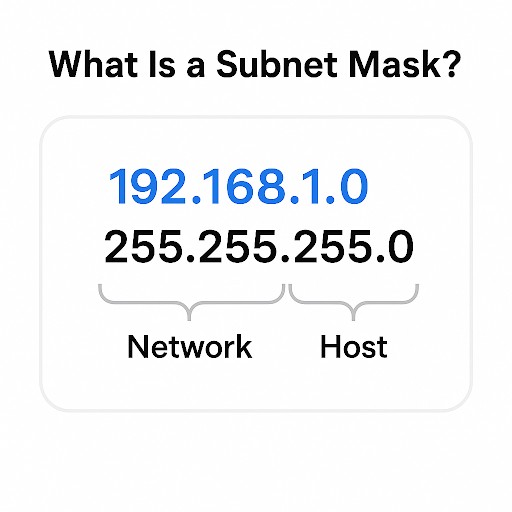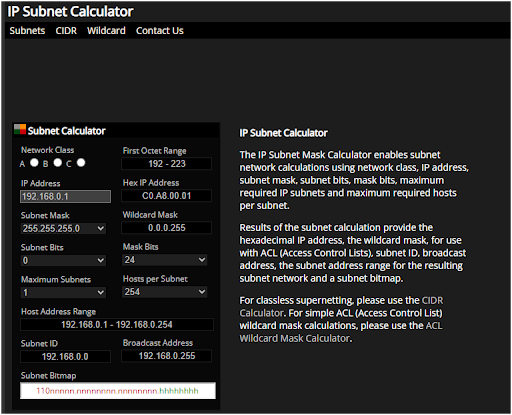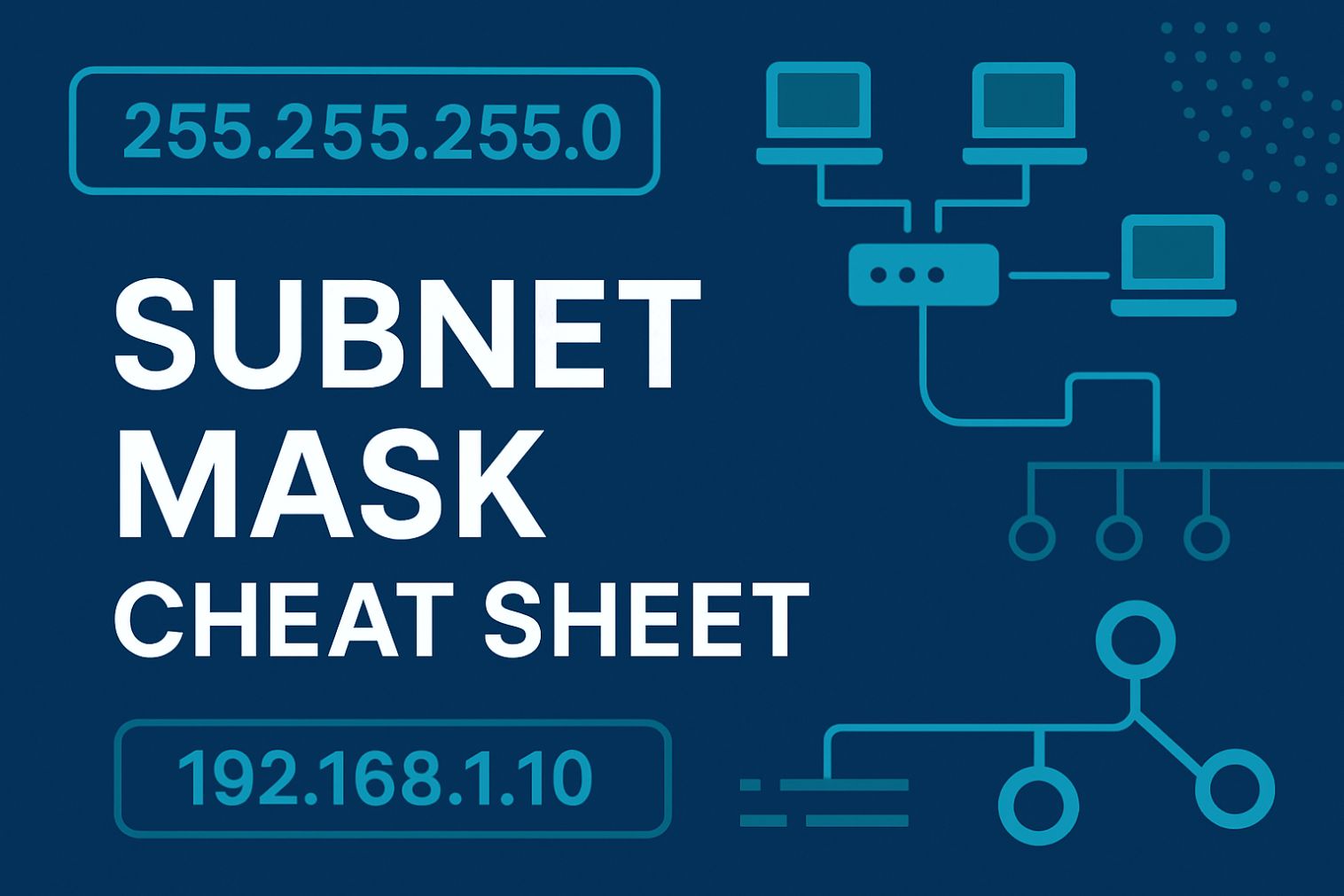When I first dove into the world of networking, I was overwhelmed by subnetting. The jargon, the formulas, the calculations—everything seemed like a maze! However, I then discovered a subnet mask cheat sheet that made it all click. Whether you’re just starting out or seeking to solidify your understanding, this guide provides a clear walkthrough of subnetting.
I’ll break everything down into bite-sized chunks and show you exactly how to apply it.
What Is a Subnet Mask?

At its core, a subnet mask is a 32-bit address used in IP networking. It helps define which portion of an IP address refers to the network and which part refers to the host.
Think of it like a filter that helps your computer figure out where to send data. It works in conjunction with an IP address to determine where data should be routed within a network.
Let’s make it simple:
- The network portion is used to identify the network you’re working in.
- The host portion identifies a specific device (like your computer) within that network.
A typical subnet mask appears as follows: 255.255.255.0. This indicates that the first three numbers (or octets) represent the network, and the last number is reserved for the hosts.
Subnet Mask Cheat Sheet: The Basics
To really get a grip on subnetting, you need to understand the CIDR notation and how subnet masks work across different subnet sizes. Here’s a breakdown:
| CIDR | Subnet Mask | Number of Subnets | Number of Hosts per Subnet |
| /8 | 255.0.0.0 | 1 | 16,777,214 |
| /16 | 255.255.0.0 | 256 | 65,534 |
| /24 | 255.255.255.0 | 65,536 | 254 |
| /30 | 255.255.255.252 | 1,073,741,824 | 2 |
The CIDR notation (such as/24) simply indicates how many bits are dedicated to the network portion of the address. The rest are for the host.
A /24 mask is common because it provides 256 subnets, each with 254 hosts.
Understanding CIDR and IP Classes
When you start subnetting, it’s helpful to know about the different IP address classes and how they fit into the subnet mask:
- Class A: Ranges from 1.0.0.0 to 127.255.255.255 and uses a /8 mask.
- Class B: Ranges from 128.0.0.0 to 191.255.255.255 and uses a /16 mask.
- Class C: Ranges from 192.0.0.0 to 223.255.255.255 and uses a /24 mask.
Each class has different uses, and understanding them will help you better plan out your network.
Subnetting Example: Breaking Down a Network
Let’s walk through an example together to get a feel for how subnetting works. Let’s say we have the network 192.168.1.0/24 and need to create 4 subnets. Here’s the process:
Step 1: Determine the New Subnet Mask
To split a /24 network into 4 subnets, we need to “borrow” bits from the host portion of the address. Each bit we borrow doubles the number of subnets.
- Borrow 2 bits (because 2^2 = 4 subnets)
- This gives us a /26 subnet mask (255.255.255.192).
Step 2: Calculate the Subnets
Now we can calculate the subnets. The new subnets will be:
- 192.168.1.0/26
- 192.168.1.64/26
- 192.168.1.128/26
- 192.168.1.192/26
Each of these subnets will have 62 hosts (since 256 – 2 = 254 hosts, and the first and last IP addresses are reserved).
Why Subnetting Matters for Network Design
 Image Credit- NetworkChuck
Image Credit- NetworkChuck
Subnetting isn’t just a theoretical exercise—it’s crucial for efficient network design. Proper subnetting can help you:
- Maximize IP address utilization: By breaking up large networks, you can assign IP addresses more efficiently.
- Improve network performance: Smaller subnets can reduce congestion and increase security.
- Simplify routing: Subnetting enables routers to make faster and more accurate routing decisions.
Tools to Help with Subnetting
 Image Credit- subnet-calculator.com
Image Credit- subnet-calculator.com
While a subnet mask cheat sheet is a great starting point, other tools can make your life easier:
- Subnet Calculators: Online tools can help you quickly calculate subnets, IP ranges, and more.
- IP Addressing Apps: Many mobile device apps enable you to calculate subnetting on the go.
- Subnetting Practice Tests: If you’re preparing for exams or certifications, practice tests are a great way to reinforce what you’ve learned.
Conclusion
Subnetting can seem complex at first, but with the right cheat sheet, tools, and examples, you’ll be subnetting like a pro in no time. Understanding CIDR notation, subnet masks, and IP classes is the foundation for building efficient and secure networks. This cheat sheet helps you get started with ease. Now go ahead and try creating some subnets on your own! If you’re still feeling stuck, don’t hesitate to revisit the examples or use one of the handy subnet calculators mentioned above. Practice makes perfect!










